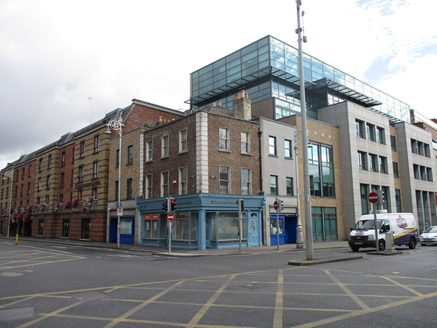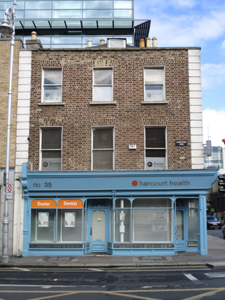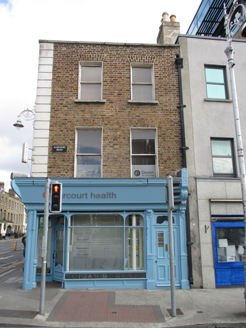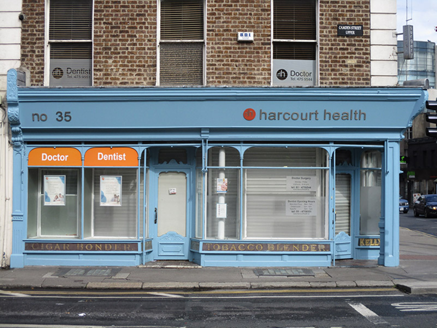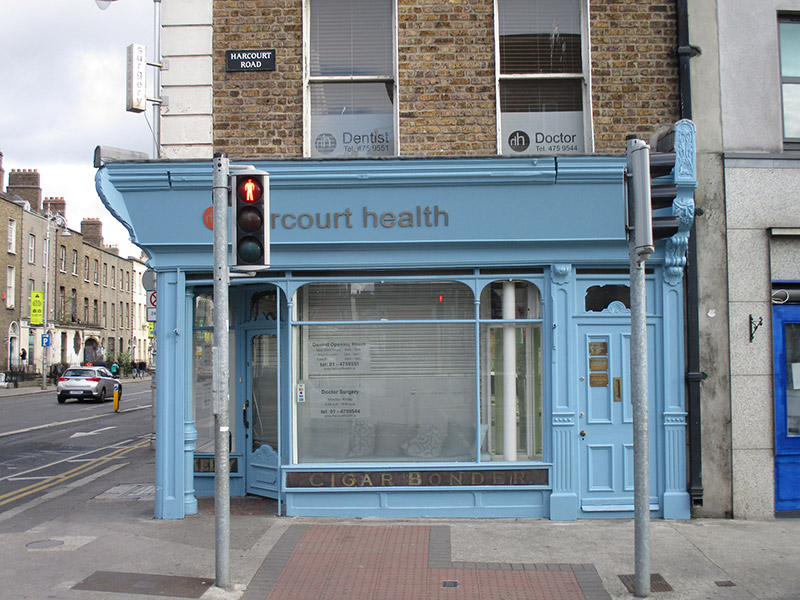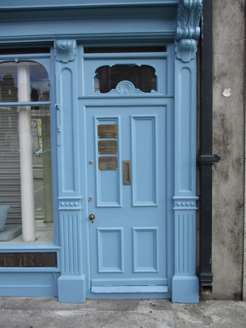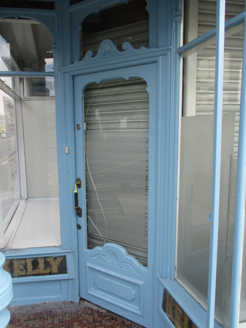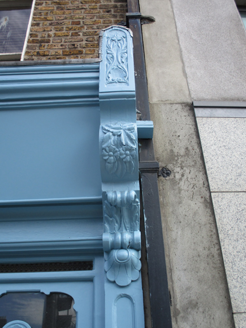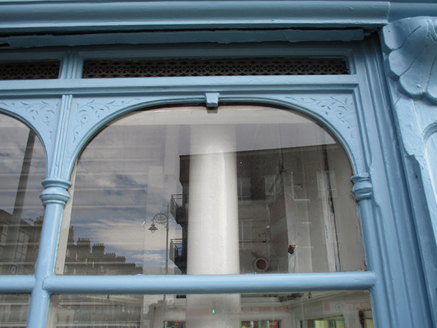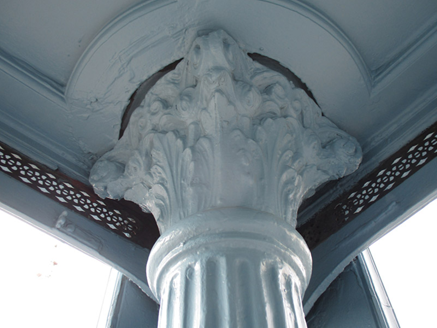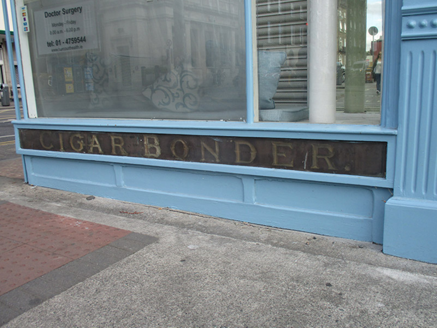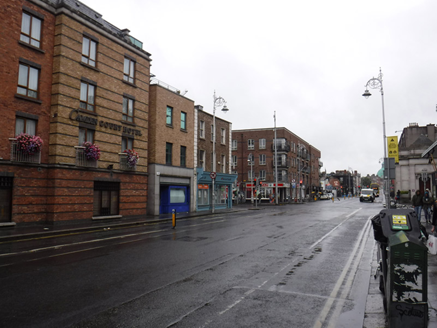Survey Data
Reg No
50110428
Rating
Regional
Categories of Special Interest
Architectural, Artistic, Social
Previous Name
Kelly
Original Use
House
Historical Use
Shop/retail outlet
In Use As
Surgery/clinic
Date
1800 - 1820
Coordinates
315655, 232764
Date Recorded
29/07/2017
Date Updated
--/--/--
Description
Corner-sited three-bay three-storey former house over concealed basement, built c. 1810, having two-bay elevation to south, attic accommodation and wraparound shopfront to ground floor. Formerly used as commercial unit. Now in use as clinic. Pitched roof, hipped to west, with dormer window, partially hidden behind brown brick parapet having cut granite coping. Rendered chimneystacks with clay pots. Cast-iron rainwater goods. Brown brick, laid in Flemish bond, to front (west) and side (south) elevations, having rendered quoins. Square-headed window openings having granite sills, raised render reveals, early one-over-one pane timber sliding sash windows. Timber shopfront comprising panelled pilasters with scrolled decorative console brackets, fascia and carved cornice. Cast-iron Corinthian column to corner. Square-headed timber-framed display windows, carved colonnettes and overlights having carved foliate spandrel panels, over panelled stall risers retaining early gold-leaf signage 'Cigar Bonder', 'Tobacco Blender' and 'Kelly'. Cast-iron decorative panels over display windows. Angled corner entrance bay, recessed square-headed door opening with carved timber architrave having decorative pediment, glazed timber panelled door and overlight. Recessed square-headed door openings, carved timber doorcase with foliate details, glazed timber panelled doors and overlights. Square-headed door opening to south, timber doorcase comprising panelled pilasters, timber panelled door, plain overlight having carved frame. Steel-framed basement lights to footpath to front.
Appraisal
This building retains much of its early form and character, enhanced by the well-proportioned openings. The shop occupies a prominent corner location, addressing both Camden Street and Harcourt Street. An ornate and well-executed shopfront, dating from the early twentieth century, greatly enriches the composition, and attractive gold-leaf painted signage provides contextual interest. The use of wood for external decoration gained popularity in the Victorian period, as new ways were developed to treat and preserve hard and softwoods. The patina of age to the early nineteenth century brick facade is a pleasing focal point on the streetscape. According to Casey (2005) 'Camden Street came into being in 1778, named after Charles Pratt, 1st Earl Camden', however much of the street was rebuilt in the nineteenth and twentieth centuries.
